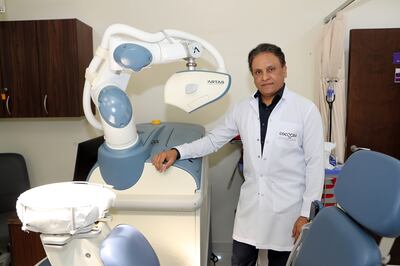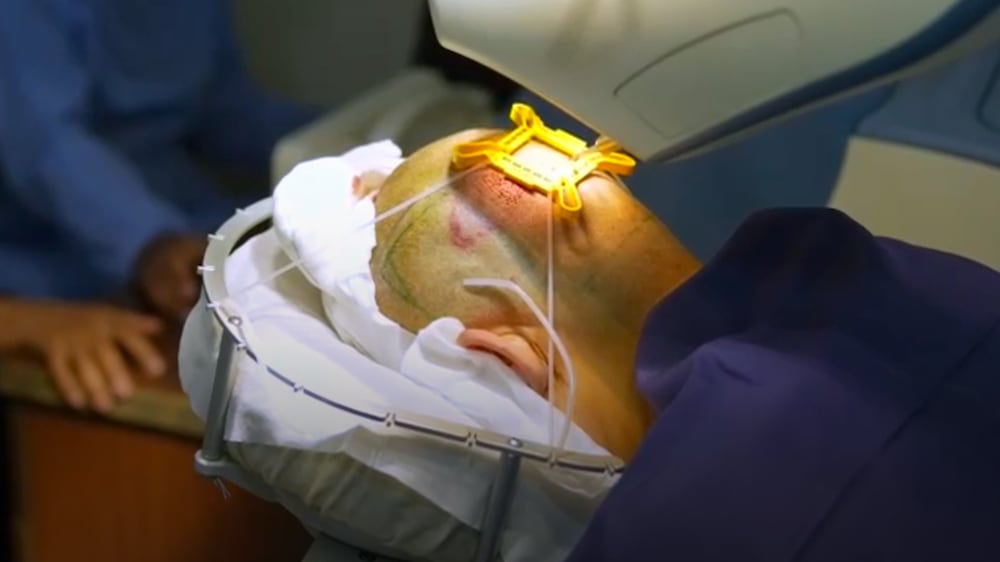A precision $500,000 hair transplant robot in Dubai, aided by artificial intelligence software, is reducing costs and improving success rates.
The integration of new ARTAS iX robotic technology has increased the accuracy of transplants to support a booming regional industry.
Surgeons in Dubai are hoping to wrestle back a share of the thriving hair transplant tourism market from Istanbul, which remains the go-to destination for hair transplants and other cosmetic procedures.
Turkey expects to receive more than 2 million health tourists this year, according to its Health Ministry, and around $20 billion in associated revenue.
In Dubai, the adoption of the latest technology is improving the success rate of long-term hair replacements, as well as cutting costs and time spent in the clinic.
Software updates and intelligent algorithms delivered by image-guided robotics are helping surgeons perfect existing hair transplant techniques, halving the time spent in a clinic to around four to five hours.
“Significant advancements have been made in the integration of AI and robotics in modern hair transplant methods, enhancing the precision throughout the process,” said Dr Sanjay Parashar, chairman of the Scientific Emirates Plastic Surgery Society, who uses the AI-powered robot at the Cocoona surgery in Al Wasl.
“The increased accuracy in targeting healthy follicles contributes to longer-lasting results and elevated success rates.
“We give the robot a command to start scanning the head, so it begins looking at the hair from all angles and then starts removing it.
“The robot has the capability of removing up to about 1,000 hair follicles in an hour, which is pretty fast and reduces human fatigue and human error.

“It then scans the front of the head and looks at the angle and depth of where the hair should grow.
“It does not cause any trauma, discomfort or swelling to the patient.
“Two years back, it would cost somebody around $10,000 to do a decent hair transplant.
“But now it can be accomplished for around $4,000.”
3D modelling
Before the procedure, a 3D model is mapped out to show patients what their hair will look like once the surgery is complete.
It gives them the option to customise their hairline and avoids damaging existing healthy hair, allowing an even distribution of new hairs for faster recovery and more natural-looking results.
The machine removes hair follicles from the back of the head, so they can harvested and inserted into bald spots elsewhere.
Dr Parashar said transplant costs should continue to recede as the technology becomes more widespread.
“In many instances, the benefits of cost and safety when opting for local treatment in the UAE significantly outweigh the perceived advantages of seeking more affordable solutions abroad,” said Dr Parashar.
Other emerging neurotechnologies include long hair transplants, allowing for precise assessments of success potential, eliminating the need for shaving or trimming, and offering immediate results are also promising to boost the industry.
The global market for hair transplants is expected to reach $30 billion by 2031.
Dr Khaled Al Nuaimi, president of the Middle East International Dermatology and Aesthetic Medical Association (MEIDAM), said open discussion and social media have helped break down social barriers and reduce the stigma attached to hair transplants.
“In the last 15-20 years, there has been a 500 per cent increase in male hair aesthetic treatments, indicative of the reduced stigma,” he said.
“Despite the temporary setback due to the Covid-19 pandemic, the sector is rebounding, driven by innovations such as follicular unit extraction (FUE) and a surge in demand due to rising awareness about physical appearance and prevalent conditions causing hair loss,” Dr Al Nuaimi said.
“The focus is not merely on addressing male-pattern baldness but also on offering solutions for hair thinning and baldness among the female population, making hair transplants a universally sought-after procedure.”







